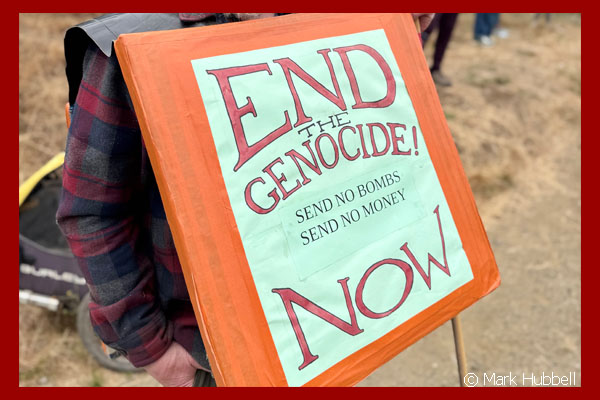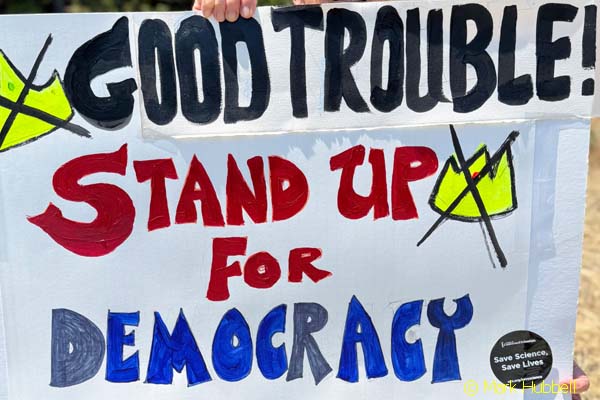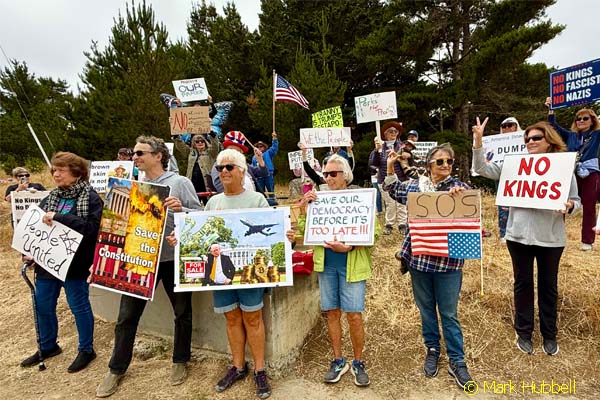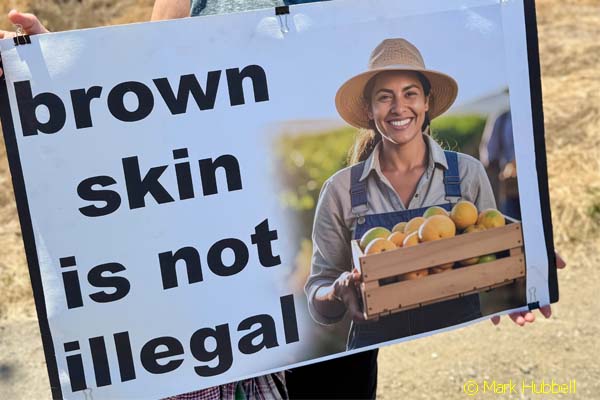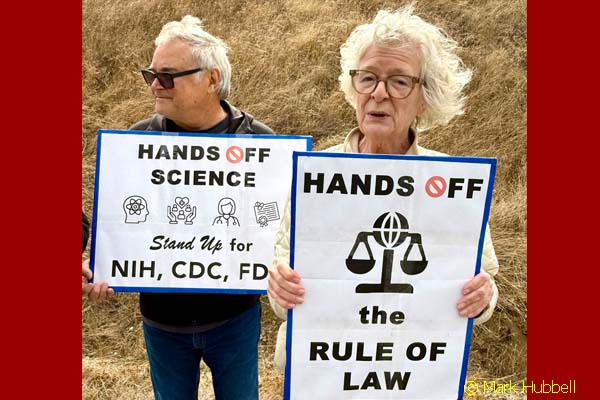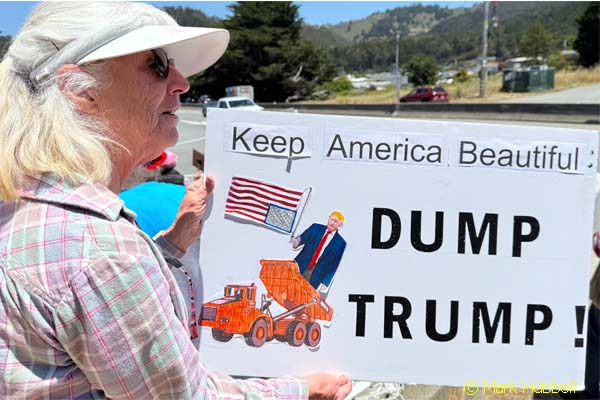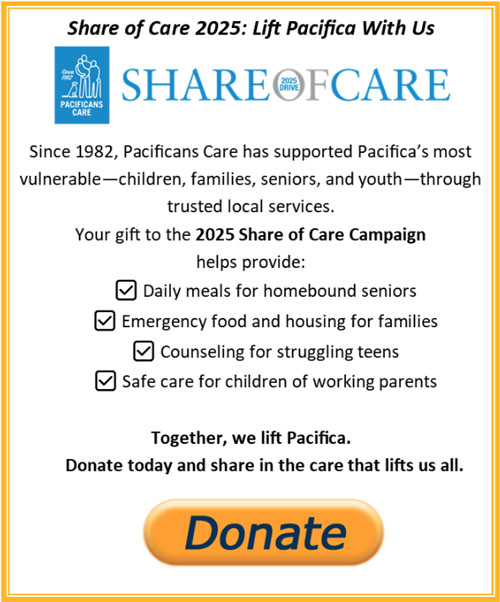Edition 4 August 2025
Calendar
| SAT 8/2 12n-1 pm | Mori Point Protest |
| MON 8/4 7 pm | Planning Commission, Council Chambers |
| TU 8/5 6:30 pm | Rapid Response Training, RSVP, see flier |
| SAT 8/9 12n-1 pm | Mori Point Protest |
| MON 8/11 7 PM | City Council, Council Chambers |
| SAT 8/16 12n – 1 pm | Mori Point Protest |
| MON 8/18 7 PM | Planning Commission, Council Chamber |
| TU 8/19 6:30 pm – 8 | Coastside United, Safety and De-Escalation w/Adam Kruggel. See post. |
| SAT 8/23 12n – 1 pm | Mori Point Protest |
| SAT 8/23 11 am – 5 pm | SSF Cultura Fest. See flier. |
| MON 8/25 7 pm | City Council, Council Chambers |
| SAT 8/30 12n – 1 pm | Mori Point Protest |
| MON 9/1 11am – 1 pm | Labor Day 17 Mile Resistance, Santa Clara to RWC. RSVP. See post |
| SAT 9/6 12n – 1 pm | Mori Point Protest |
| MON 9/8 7 pm | City Council, Council Chambers |
| SAT 9/13 5-8 pm | Pacifica Resource Center, Palm A Palooza, Skyline’s Farallon Room, Tickets. See post |
| MON 9/15- FRI 10/31 | Pacific Beach Coalition, Butt Blitz. See post. |
| SAT 9/20 | California Coastal Cleanup Day. See post. |
| MON 9/22 7 pm | City Council, Council Chambers |
| SAT-SUN 9/27-28 | Pacifica Fog Fest |
See posted calendars for:
Photos have been contributed by Leo Leon, Mark Hubbell and Stephen Johnson
Pacifica Voice is eager to receive articles on issues important to our community. Please send them to editor@pacvoice.org for consideration.
To receive press releases and periodic messages from the Pacifica Voice please add your name and email address to our subscriber list – SUBSCRIBE HERE. FREE
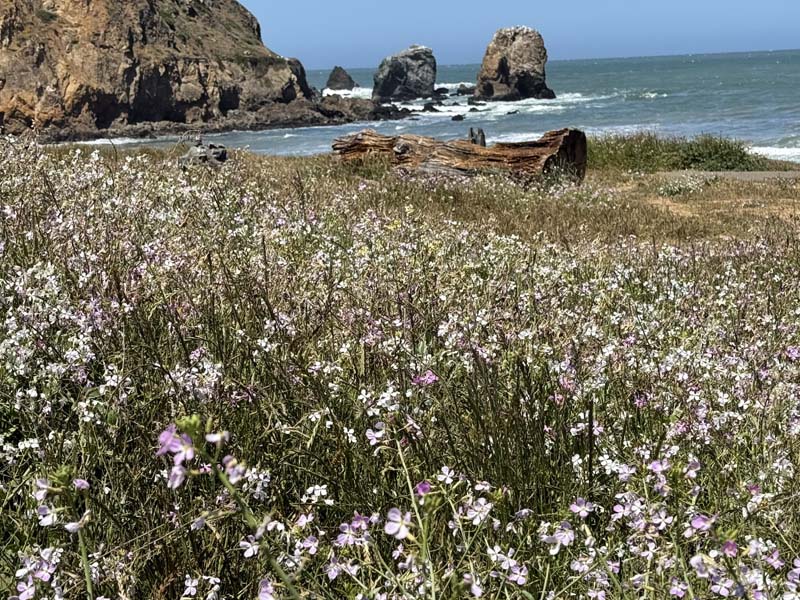
FOR CONSIDERATION
Support of Block the Bombs Act
By Pacifica Peace People

Do not look away! The video below was sent to me (Sunday, July 20, 2025) from one of my family members who is still in Gaza “living” there and trying to survive. These children jumped inside a garbage container seeking food. My outrage has risen to maximum level: our tax dollars are pouring into arms/weapons/blockades being used on the people of Gaza who are now starving to death, if not already badly wounded or dead. Wake up, everyone! HELP!
On behalf of humanity and good will, please contact our Congressman, Sam Liccardo (202-225-8104 DC, or 650-323-2984 HMB). Flood him with your humanitarian requests that he join 25+ House members in cosponsoring Delia Ramirez’s (D IL) bill “Block the Bombs Act”
No matter your flavor of political persuasion, I do hope you are willing to speak out now! Do not be silent when this unspeakable horror in Gaza is being supported by your tax dollars. It is the least you/we can do to save lives (17,000+ children have been killed; thousands more have been maimed and/or have lost their entire family). Let us begin the process of restoring peace, stability and livability for the 2.1 million people in Gaza.
Video link:
A Better Budget: Governance by Grown-Ups
by Sam Liccardo, US Congressman CA District 16 – reprinted with author’s permission
Many Americans might understandably believe, amid all of the wailing and teeth-gnashing over devastating cuts to Medicaid, food programs, and student aid spending, the GOP leadership must be proposing a budget that will reduce our monstrous $1.9 trillion deficit.
They would be wrong.
The One Big Bloated Borrowing Bill — making its way from the Senate back to the House of Representatives this week — will accelerate America’s accumulation of debt by $3.9 trillion over the next decade, according to the nonpartisan Committee for Responsible Budgeting. Add another $1.4 trillion in new debt when Congress inevitably makes several “temporary” provisions — a common way for Congress to conceal the long-term costs of their giveaways — permanent in a couple of years.
While GOP leaders gaslight the public about the bill’s cost, nearly every independent expert — from the nonpartisan Congressional Budget Office to the conservative Tax Foundation — know better. The bill also hasn’t fooled the markets. After the House passed its less costly version of the bill, Moody’s downgraded U.S. bonds in view of “current fiscal proposals,” while wary bond investors pushed yields higher.
While some might dismiss my criticism of GOP leaders’ budgetary recklessness as mere partisanship, in truth, both parties own responsibility for our fiscal failures. Our $36 trillion in debt emanates from a long and bipartisan history of overpromising and overspending — not to mention overlooking our responsibility to future generations.
As Democrats, we must do better. Our children — and our nation’s future — depend on it. To offer America a better path, Democrats must demonstrate what I call “governance by grown-ups.”
Grown-up governance recognizes the moral imperative of taking the long view: saving, sacrificing, and investing today for our children’s tomorrow. It maintains critical infrastructure rather than waiting for its more costly replacement. It overcomes the myopia of drilling today, and worrying about emissions tomorrow. Above all, it compels us to stop spending our children’s money.
We don’t need to look far to find responsible, grown-up budgeting. Every year, mayors, CEO’s, and executive directors throughout the country confront tough budgets by consulting experts, engaging stakeholders, and informing the public. For example, when I became San Jose’s mayor in 2015, we faced skyrocketing payments on $4 billion in employee retirement debt that forced us to close fire stations and shutter libraries. We engaged actuaries and economists; spent hundreds of hours in difficult negotiations with 11 unions; and extensively communicated with voters to approve the pension reform agreement. The resulting savings helped us reactivate fire stations, libraries, and other services, and we left my successor a $30 million surplus.
We succeeded by deploying a familiar approach to confronting budgetary challenges: deploying expertise, engaging in tough conversations, and making decisions transparently. This isn’t new. It’s just new to Congress.
Let’s start with expertise. Inspectors general saved taxpayers some $70 billion in waste and fraud last year, or $18 for every $1 spent on their work. Rather than firing 17 inspectors general or threatening the takeover of the General Accounting Office, as Trump has, Congress could actually implement their advice. The IRS could also help reduce the deficits by hiring specialists in corporate, cryptocurrency, and other transactions to gather roughly $625 billion in tax revenue that tax cheats hide from Treasury collection each year. Instead, DOGE will cut IRS experts.
Second, we must engage powerful stakeholders in tough conversations. Defense comprises the largest category of discretionary federal spending, and powerful industry lobbyists persuaded Congress to propose $150 billion more spending in this bill. Yet Congress could save tens of billions annually by abandoning schlerotic procurement processes that reward the same half-dozen contractors, buying more technology products off the shelf, shifting from cost-plus to fixed-price contracting, and scaling the Defense Innovation Unit’s approach of working directly with technology providers. We could save more by heeding our experts — Pentagon generals — and retire antiquated weapons systems, and invest half of the savings into systems modernization. We could overcome pork-drive political parochialism by reviving the 1990’s approach of the Base Realignment and Closure Commission: proffer the Pentagon’s list of cuts for an up-or-down vote on the floor, without amendments.
Third, we owe our taxpayers transparency. We must stop promising what we can’t afford — as when Trump painted Congress into a corner by pledging $5 trillion in tax cuts. The public should also know that not all tax goodies bring the same economic benefits: the $14 million estate tax exemption will pad the assets of a generation of wealthy heirs, but will create far fewer jobs than a deduction for research and development investment. We also must forthrightly acknowledge the looming insolvency of our Social Security and Medicare funds. This gap requires more than merely cutting the billions in waste that the General Accounting Office and Inspector General have uncovered. It requires making difficult choices — starting with lifting the inequitable wage cap on payroll taxes that exempts very high earners from paying payroll tax on every dollar in the way that middle-income earners must pay.
None of this grown-up decision-making comes easily. By shirking it, however, Congressional Republicans have abdicated their responsibility for our fiscal future. Democrats can seize this moment — if we have the courage to do so.
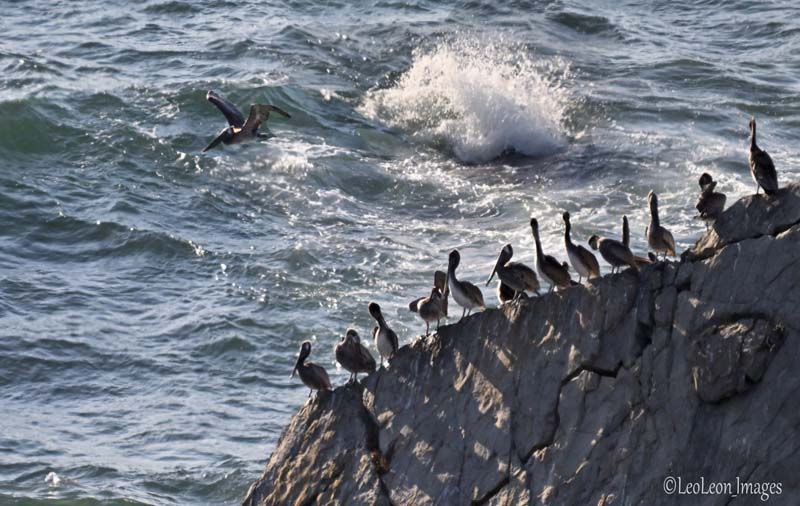
CLOSE TO HOME
Meet Alex Contreras
In Pacifica, a new partnership is helping ensure that housing policies reflect the voices and needs of the people most impacted by the housing crisis. The City of Pacifica, the Housing Endowment and Regional Trust of San Mateo County(HEART), and the Pacifica Resource Center have joined forces with the Partnership for the Bay’s Future (PBF), a regional initiative that embeds experienced housing professionals—fellows—into local governments to work hand-in-hand with communities. This collaboration brings together public-sector leadership and community wisdom to lay the groundwork for zoning reforms that are shaped by local input, rooted in equity, and focused on real outcomes for Pacifica residents.
At the heart of PBF’s model is a commitment to centering those most often excluded from policymaking, building bridges between government and residents, and creating lasting change through policy. As the fellow embedded in Pacifica, I serve as a connector between the government and community, helping to translate complex housing issues into meaningful conversations and actionable steps.
As is the case across the Bay Area, Pacifica is facing real challenges: high housing costs, limited affordable options, and growing concerns about displacement. But this is also a moment of opportunity to reimagine what housing can look like when shaped by the people who live here. One of the most important tools cities use to shape housing policy is the Housing Element. This state-required component of every city’s General Plan outlines how the city will meet its housing needs—especially for low-income residents, seniors, people with disabilities, and others who face systemic barriers to housing.
While the Housing Element sets important goals, it doesn’t implement them on its own. That’s where zoning comes in. Zoning laws determine what kinds of housing can be built and where—from single-family homes to apartment buildings, from affordable units to mixed-use developments. Historically, zoning has been used in many parts of the country to exclude lower-income residents and communities of color. Today, we have the opportunity to reshape zoning in ways that are inclusive, forward-looking, and grounded in community values.
We are working to update zoning policies to align with its Housing Element. But beyond meeting legal requirements, our aim is to create policies that are informed by residents, especially renters, low-income households, and others who’ve been historically left out of the planning process. To that end, in the near future – we’re hosting a series of community meetings to help residents understand what zoning is, why it matters, and how it connects to everyday life in Pacifica. We want residents to see themselves as co-creators of housing solutions for Pacifica’s future.
In the coming weeks, our site team will host a series of interactive, informative sessions across Pacifica. These community meetings will explore how zoning decisions affect our daily lives, and how residents can help shape the city’s housing future. I hope you’ll join us. Together, we can create housing policy that reflects Pacifica’s values of equity, inclusion, and the belief that everyone deserves an affordable place to live.
About the Author
Before joining PBF, Alex spent several years working to bridge the gap between housing and transportation policy across California, including roles at the Greenlining Institute and the California Transportation Interagency Equity Advisory Committee. When not working on equitable housing solutions, Alex can often be found chatting with Pacifica residents at local cafés or biking the streets of their home community in Oakland.
Crisis on the Coast: New Report on Farmworker Housing Solutions in San Mateo County
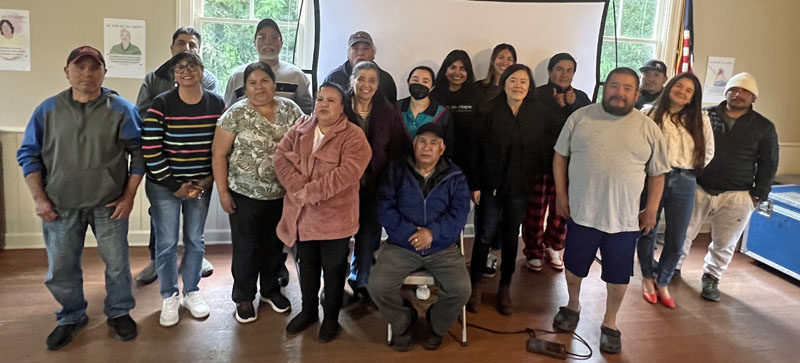
Photo credit / Crédito de foto: Ariana Santana
Farmworkers in San Mateo County provide tens of thousands of Californians with produce, dairy, eggs, meat, and flowers, but these communities are facing dire housing circumstances.
Our new report, Semillas del Cambio: Advancing Dignified Housing for Farmworkers on the San Mateo County Coast, documents this crisis and provides an actionable framework for policymakers, funders, and other stakeholders to advance strong protections, prevent displacement, and advance truly affordable housing with dignity for farmworkers.
In partnership with Coastside Hope and Puente de la Costa Sur, we interviewed 22 San Mateo County farmworkers who shared just how difficult it is to find permanently affordable and habitable housing on the Coastside. Farmworkers reported enduring a wide range of indignities to stay housed, such as sleeping in the kitchen and facing continual harassment.
These eye-opening interviews can be read in full in our companion report, La Vida en el Campo: Farmworker Stories from the San Mateo County Coast.
Despite all the challenges, farmworkers take immense pride in their work and are steadily organizing to change their conditions. From fighting for clean water to acquiring and preserving affordable housing, farmworkers are taking their future into their own hands and are calling for urgent action.
Semillas del Cambio offers concrete and proven policy recommendations that directly address the continued farmworker housing crisis on the Coastside. We encourage you to take the time to read through the report and share widely with your networks.
—
Los trabajadores agrícolas en el Condado de San Mateo proveen frutas, verduras, lácteos, huevos, carne y flores a miles de habitantes de California, pero estas comunidades enfrentan condiciones alarmantes en materia de vivienda.
Nuestro informe nuevo, Semillas del cambio: Avanzando hacia una vivienda digna para trabajadores agrícolas en la costa del Condado de San Mateo, documenta esta crisis y presenta un marco de acción para que responsables de políticos, patrocinadores filantrópicos y otras partes interesadas puedan proteger a los inquilinos trabajadores agrícolas, prevenir su desplazamiento y avanzar hacia una vivienda verdaderamente asequible y digna.
En colaboración con Coastside Hope y Puente de la Costa Sur, hablamos con 22 trabajadores agrícolas que compartieron lo difícil que es encontrar vivienda permanente asequible y habitable en la costa. Los trabajadores agrícolas informaron haber soportado indignidades variadas para conservar su vivienda, como dormir en la cocina y sufrir acoso constante.
Estas reveladoras entrevistas se pueden leer completas en nuestro informe complementario, La vida en el campo: Historias de trabajadores agrícolas de la costa del Condado de San Mateo.
A pesar de todos los retos, los trabajadores agrícolas se sienten inmensamente orgullosos de su trabajo y no dejan de organizarse para cambiar sus condiciones. Desde la lucha por el agua potable hasta la adquisición y conservación de viviendas asequibles, los trabajadores agrícolas toman las riendas de su futuro y exigen medidas urgentes.
Semillas del Cambio ofrece recomendaciones políticas concretas y probadas que atendieron directamente la continua crisis de vivienda de los trabajadores agrícolas en la costa. Le animamos a que se tome su tiempo para leer el informe y lo comparta ampliamente en sus redes.
Farewell 411 Oceana Blvd
By Tarra Knotts, Fairmont resident
Here is how I understand the history of 411 Oceana Blvd: the site housed Manor Elementary from 1980 to 1992.
In 1972, an alternative school, conceived by parents who enjoyed the co-op preschool and educators interested in an alternative to traditional classroom experiences, began its search for a home. The alternative program first co-located at Vallemar School, then Cabrillo, and later Sharp Park.
Around 2001, the Laguna Salada Alternative School moved to 411 Oceana; and in 2003, it was renamed Ocean Shore School and modernized with an understanding that the school population would be at least 350 kids (smaller than other school sites) to support the school’s intended educational alternative approach.
When I moved into Fairmont around 2008, I certainly didn’t know the history of this site. All I knew was that there was a larger K-5 school on Hickey and a slightly smaller K-8 on Oceana. In 2011, when we toured the district for potential kindergartens, my spouse suggested we try Ocean Shore because it seemed to offer unique features like field trips, hands-on learning, and a high amount of parent involvement. It was not a charter/magnet school, but seemed to be similar.
From 2012-2024, my 3 children attended Ocean Shore. I quickly became involved in the PTO, and my husband and I, both working full-time, took turns with field trips and theme days. Being on the PTO helped with the “recommended” volunteer hours since I could fulfill them after work. I didn’t fall in love with the program immediately. The controlled chaos was evident, as was the limited funding and support that all schools in Pacifica experience. However, between my oldest child’s 3rd and 4th grade years, I began to see the beauty of this alternative program and felt the whole-school community take hold of my family. Two of my children struggled in any formal education environments, yet they were loved and cared for by the entire school. It truly was every part a village. It really was a family of families to me; and from what I can tell, others felt this too.
Fast forward to the post-COVID year when I was PTO president. I was reminded that the 50th anniversary of the alternative school was approaching. In fall 2023, we held a weekend-long celebration of the 50th anniversary of the Alternative Class (later called the Alternative School). During that process, I learned about the founding intentions of parents and educators. They wanted parents to support education both inside and outside the classroom, to be able to learn physically through hands-on experiences, and to delve deeply into their studies. They envisioned a space for kids who didn’t thrive in traditional classrooms but needed more freedom to operate. I met many locals who were part of that experience as parents or children. I even met a few alumni from other parts of the Bay Area and the country. My love for this program deepened.
However, in early January 2025, the school district announced they would be clearing out 411 Oceana Blvd (as well as part of Vallemar School). Ocean Shore’s K-8 program will no longer exist after June 2025. The 6-8th grade students at both schools will be moved to Ingrid B. Lacy. The K-5 Ocean Shore program will move to the Sunset Ridge School site but will not be maintained as a separate unit (despite roughly three decades of experience being co-located at different sites prior to 411 Oceana Blvd.) Instead, Ocean Shore children and teachers will mingle with Sunset Ridge students and staff. While combining students from two sites makes logical and practical sense, it is difficult to imagine an alternative-school approach maintained for very long, even with the best of efforts from all parents and staff.
From what I know about the alternative-program’s intentions, the demands required from educators and parents, and the realities of school funding for struggling students, at least 60% of the school sites’ families and most of its educators must invest and foster the alternative program to survive – or it will see the demise of an era that began in the 70s.
Of course, I hope that the Sunset Ridge and Ocean Shore families commingle and become better. I feel pretty confident the families and kids and staff will settle in and do some nice programs and extras for the kiddos. But I do hope the district reconsiders the need for two Pacifica K8. Some kids, especially at ~11 years old, need a “home village” a bit longer before relocating to a large middle school.
I feel the next generation of parents won’t get to experience coming into a classroom to make paper hats with kindergarteners one year, craft snowy plovers out of cotton and sticks the next, and later drive these same kids on overnight wilderness field trip from 3rd to 6th grade, and watch them grow into responsible teens in 8th grade. With more kids per grade, parents and educators won’t get to know the children as deeply. The kids will miss out on being known by their village of “aunties and uncles”. Even with committed parents and staff, it will be harder to weave a safety net and harder to keep it woven when kids need that safety net even more.
I feel sad for the next generation and grateful for the past generations. But, in time, perhaps I can be part of a new change, a change that re-creates the village at each school site across our district. Who knows, maybe it will be at 411 Oceana Blvd!

PACIFICA IN PROTEST / SOCIAL JUSTICE
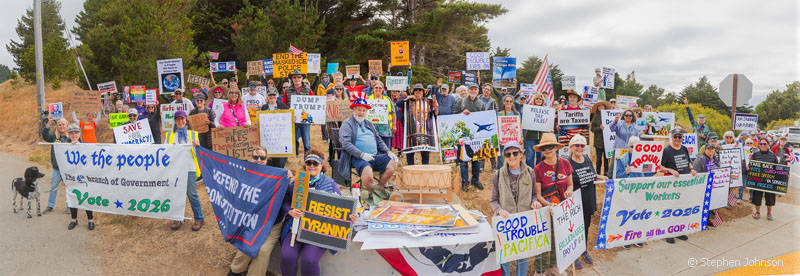
Coastside United Schedule and Training Invitation

Join Coastside United for Action/Coastside Indivisible
Adam Kruggel on Safety and De-escalation techniques.
Tuesday, 8/19/25,6:30 pm Little Brown Church,
1850 Francisco Blvd
As Pacifica and the Coast step up to advocate in solidarity for social justice issues, we want to be educated and prepared. We look forward to seeing you in person or on Zoom! This is a local Indivisible event.
There is limited seating (for 80); please arrive early to be assured of a chair.
RSVP helpful but not required.
To join Zoom: Meeting ID: 824 7941 5330 Passcode: 029102
Our Weekly Sign Waving
Saturdays, Supporters of the National Park Service
Hwy 1 & Mori Point (at the Moose Lodge), Pacifica, Noon
Join us every Saturday between 12 and 1 at the entrance to Mori Pt. In front of the Moose Lodge to protest yet another serious blow to the National Park system. Join us with banners, signs, or just your presence.
Pacifica Protest – Sign Up
Saturdays, Colma Protest: Stand Up for Democracy
Colma Tesla Dealership 1500 Collins Rd, Colma, 2-3 PM
Weekend warriors – Join us with your signs and voices to say NO to the Trump/Musk Coup and their threat to our democracy.
Colma Tesla – Sign Up.
Rapid Response Training
Sharp Park Library Free Immigration Communication Supplies
The following immigration supplies (cards) are available at Sharp Park Library during business hours
You have constitutional rights:
- DO NOT OPEN THE DOOR if an immigration agent is knocking on
- the door.
- DO NOT ANSWER ANY QUESTIONS from an immigration agent if
- they try to talk to you. You have the right to remain silent.
- DO NOT SIGN ANYTHING without first speaking to a lawyer. You have the right to speak with a lawyer.
- If you are outside of your home, ask the agent if you are free to leave and if they say yes, leave calmly.
- GIVE THIS CARD TO THE AGENT. If you are inside of your home, show the card through the window or slide it under the door.
- SMC Rapid Response Hotline: 203- 666-4472
Usted tiene derechos constitucionales:
- NO ABRA LA PUERTA si un agente de inmigración está tocandola puerta.
- NO CONTESTE NINGUNA PREGUNTA de un agente de inmigración si el trata de hablar con usted. Usted tiene el derecho de mantenerse callado.
- NO FIRME NADA sin antes hablar con un abogado. Usted tiene el derecho de hablar con un abogado.
- Si usted está afuera de su casa, pregunte al agente si es libre para irse y si dice que sí, váyase con tranquilidad.
- ENTREGUE ESTA TARJETA AL AGENTE. Si usted está dentro de su casa, muestre la tarjeta por la ventana o pásela debajo de la puerta.
- SMC Línea de respuesta comunitaria: 203-666-4472
- I do not wish to speak with you, answer your questions, or sign or hand you any documents based on my 5th Amendment rights under the United States Constitution.
- I do not give you permission to enter my home based on my 4th Amendment rights under the United States Constitution unless you have a warrant to enter, signed by a judge or magistrate with my name on it that you slide under the door.
- I do not give you permission to search any of my belongings based on my 4th Amendment rights.
- I choose to exercise my constitutional rights.
These cards are available to citizens and noncitizens alike.
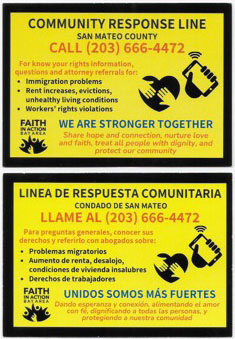
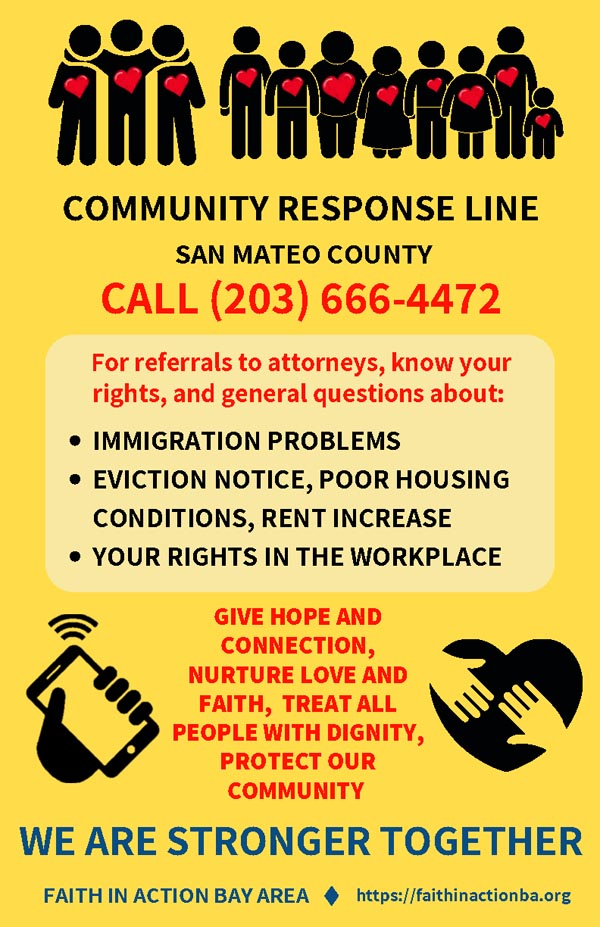
Labor Day Action
From Santa Clara to Redwood City: Historic 17x17k Rally on El Camino Real
Rally · Volunteer organized
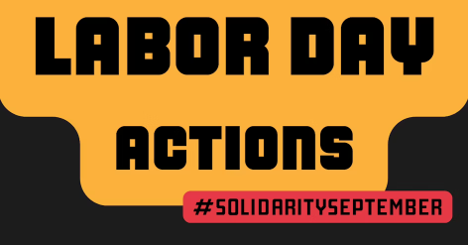
11am – 1pm PDT
790 W El Camino Real
Mountain View, CA 94040
About this event
On June 14, we united 20k people to stand proudly together in our community, to protect everyone, and defend our democracy, in a joyful, powerful 7mile line of solidarity.
We are back to do it again, expanding our rally to 17 miles of El Camino, from Santa Clara to Redwood City, along the south side once again. Please note, mobilize requires us to select one location, which is not representative of the rally location!
Sign up for an approx. half mile segment, volunteer, and/or become a segment host:
SEGMENTS
- Claremont Ave near Redwood City sign (Redwood City) to Broadway near small strip mall (Redwood City)
- Broadway Ave near Sequoia High School (Redwood City) to Jefferson Ave near Whole Foods (Redwood City)
- Jefferson Ave near Vitamin Shoppe (Redwood City) to Oak Ave near Wendy’s (Redwood City)

HOUSING
A Human-made Housing Crisis Emerges in Pacifica Streets
By Suzanne Moore
In a crisis decades in the making, Pacifica is now acutely experiencing repercussions of an unfolding housing crisis. A perfect storm of events are coming together: increased evictions that exceed pre pandemic numbers, communities displacing unhoused residents through stricter laws and enforcement, and a reduction of funding to safety net institutions.
Pacifica is adjacent to San Francisco, and their County recently adopted laws restricting RVs from parking on their streets longer than two hours. In our County, Millbrae, Redwood City, and Unincorporated San Mateo County have all adopted ordinances that restrict encampments. This occurs at a time when our County states shelter beds are full.
For those of us witnessing the evidence of folks living in motorhomes, cars and vans, or simply unsheltered in a tent or on city streets, we are caught between a sense of compassion and alarm as our streets and community are transformed.
How do we try to prepare and effectively work with what is now literally at our doors?
- Seek out those with experience, some success, and possible funding. Currently, our County and State are likely sources. Pacifica cannot meet this crisis alone.
- Update current data: utilize folks who can provide a complete picture of what is going on. The police meet some folks in our community while our Homeless Outreach Team sees others. Combine their observations and seek stories from those directly impacted to get a more complete and informed viewpoint.
- Identify what can be done immediately. Outreach and case management are currently available, access to CORE agency emergency housing is also readily at hand. Other resources like temporary interim housing take time but could be developed far in advance of permanent housing. The three necessary components to move forward are money, land, and community will.
- Mobilize efforts to achieve stated goals. Pacifica already has statements that identify our intent:
- Our City’s mission statement includes enhance quality of life, build a better community, strive for public safety, protect and preserve the environment,
- Our Housing Element lists prioritization of our vulnerable populations.
We, as a community, need to identify this need, address solution-building efforts, and request our City to urgently prepare for what is already a community emergency.
HIP Housing
ANNUAL HIP HOUSING CALENDAR CONTEST OPENS TO SAN MATEO COUNTY SCHOOLCHILDREN
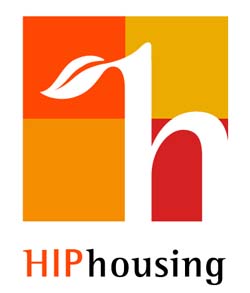
Each year the organization asks school children in San Mateo County, grades Kindergarten through 5th, to illustrate what home means to them. Contest entrants also provide a quote to accompany their artwork. After the contest close, judges determine the top 12 illustrations, which are then featured in a calendar for the new year.
Since 2001, HIP Housing’s Annual Calendar has brought warmth to thousands of homes and serves as outreach to the community about the organization’s four affordable housing programs. Last year HIP Housing received over 500 submissions for the contest, a new record. Entrants came from 19 different cities and/or municipalities in San Mateo County, with winners being selected from 10 different schools.
The calendar is released in early December each year, with a launch party recognizing the winners held shortly after the Thanksgiving holiday. Details on the calendar party and release will be announced at a later date.
For more information about the contest, please visit https: hiphousing.org/calendar-project/.
About HIP Housing: HIP Housing has been serving the housing needs of San Mateo County residents since 1972. What started as a small social service agency has grown into a multifaceted organization housing 1200 people every year and assisting thousands more in their local housing journey. HIP Housing empowers families and individuals to live happier, more independent lives by investing in their human potential and providing access to an affordable, safe place to call home through their Home Sharing, Self-Sufficiency, Housing Readiness, and Affordable Property Development and Management programs.
Learn more at hiphousing.org
HIP HOUSING Rooms for Rent
4 Below Market Rate Homes in Pacifica
Note: Application deadline was July 25 for Pacifica residents and workers. Pacifica Voice has reached out to City Council and the Bay Area Affordable Homeownership Alliance (BAAHA) for more applicant pool information.
What is a Below Market Rate (BMR) home? According to The Bay Area Affordable Homeownership Alliance:
BMR homes are established through an Inclusionary Zoning city Ordinance that expands affordable home ownership opportunities in the community. The ordinance requires developers to set aside a percentage of the new units they bring to market to be permanently affordable for low to moderate income households. Keep in mind that not all cities have Inclusionary Zoning Ordinances in place.
BMRs could offer households a viable format to secure the benefits of homeownership. In many cases, the cost of ownership may be considerably less than purchasing an open market (not a BMR) home; and in some cases could be less than or comparable to the cost of renting a home. These privileges and benefits; however, do come with a number of restrictions that apply to BMR homeownership (type and level of restrictions vary for each city … Click Here to see Pacifica’s Ordinance):
- The owner must permanently reside in the home – it cannot be rented
- There are guidelines that may restrict the transfer of title to another family member or heir
- There are restrictions on refinancing the home, including obtaining cash out refinancing
- The property must be resold at an assigned price by the city and a strict set of protocols must be maintained in selling the home
- The property must be maintained in good shape and within all health and safety codes
- There are restrictions in adding capital improvements to the home
The four BMR homes are part of the The Pacifica Heights Fassler Avenue townhomes development project. …Click Here to see more info about the applicant process
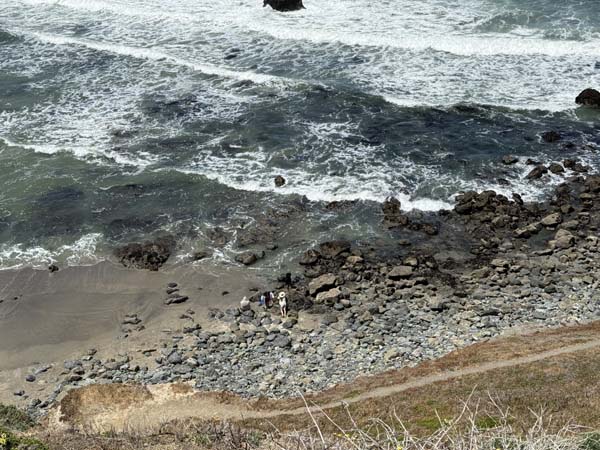
CLIMATE AND ENVIRONMENT
Pacific Beach Coalition
The Pacific Beach Coalition recently hosted its annual Fireworks Cleanup on July 5 at Sharp Park Beach, Rockaway Beach, and Linda Mar State Beach. We were joined by 154 volunteers who collected a staggering 2,620 pounds of landfill trash left behind by partygoers, including melted cans, sparklers, and toxic microplastics. The beaches are much cleaner and safer now thanks to their efforts.
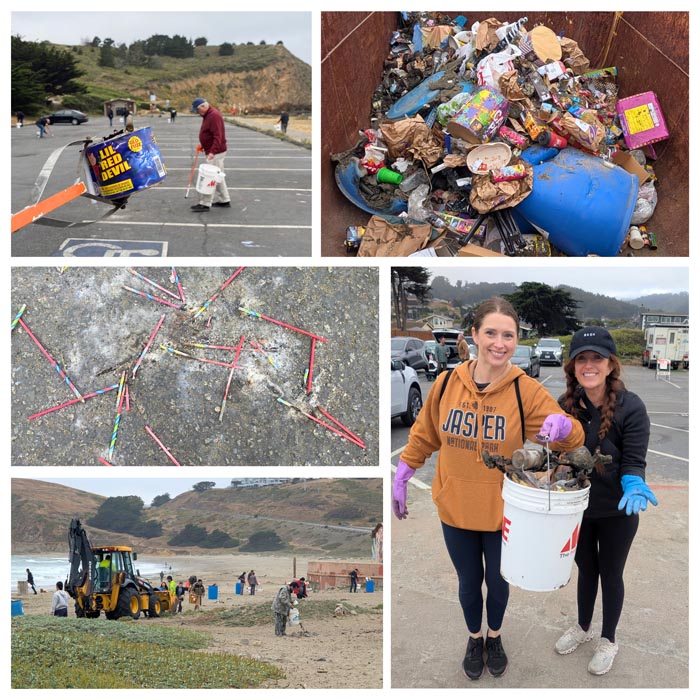
Want to make an impact right here in your community? California Coastal Cleanup Day is just around the corner on September 20, 2025. All of our site locations will host their cleanup and habitat restoration events on September 20. You too can adopt and organize a cleanup for your own special location that’s not already covered by contacting jim@pacificbeachcoalition.org. Visit our website for the full list of locations and more information about this special statewide cleanup. Registration will open soon.
Plus, the Butt Blitz is back! From September 15 to October 31, 2025, we encourage everyone to collect cigarette butts before the winter rains wash them into our waterways and out to sea. Our goal is to collect as many butts from as many areas as possible. Turn them in to us and we’ll send them to TerraCycle to be recycled and turned into items such as park benches and tables. All monthly cleanup sites will serve as cigarette butt drop-off locations or you can give them to any PBC member who can turn them in.

We’ll conclude September with FogFest — the city’s most-anticipated event of the year. PBC has been invited to lead the parade as the co-grand marshal. Come see our pelican float and vote on next year’s Earth Honoree slogan. If you’re interested in lending a hand on the float, email info@pacificabeachcoalition.org.
Congressman Sam Liccardo Demands Answers on Bay Area Whale Deaths
July 23, 2025
Liccardo leads a letter of twenty colleagues to NOAA on the alarming uptick of gray whale deaths in the Bay Area.
WASHINGTON, D.C. – Bay Area whale deaths have reached a twenty-five-year high (link is external). Congressman Sam Liccardo (CA-16) demands answers from the National Oceanic and Atmospheric Administration (NOAA) on whether funding and staffing cuts have impacted the agency’s ability to safeguard our oceans and marine life. The letter, penned by Liccardo and co-signed by the entire Bay Area delegation, raises the alarm on the unprecedented number of whale deaths and demands answers for the increasing delay in NOAA’s response time to whale strandings.
“Whale populations and migration patterns offer critical insights into the health of our oceans. When their bodies wash ashore, it raises urgent questions about what’s harming these magnificent creatures—and what’s happening in our ocean,” said Liccardo. “These deaths are heartbreaking for our coastside community and coincide with a chronically understaffed and underfunded NOAA. The public deserves answers about NOAA’s current response to this spike in whale mortality.”
Liccardo and his colleagues have asked NOAA to answer the following:
1. Given the alarming number of gray whale deaths in the San Francisco Bay Area this year, we request information about whether NOAA has tested any hypothesis, developed any theory, or reached any conclusion about the (a) the cause of the apparent increase of intrusion of whales into the San Francisco Bay, and (b) the cause of the apparent spike in whale deaths.
2. What current response efforts are underway?
3. What contingency plans does NOAA have in place should mortalities continue, and is NOAA actively preparing for the possibility of another Unusual Mortality Event?
4. Given NOAA’s reported funding cuts, staffing shortages, and limited emergency response capacity, how is the agency ensuring compliance with the Marine Mammal Protection Act and the National Marine Sanctuaries Act?
i. Additionally, does NOAA have sufficient staff and resources to respond promptly and effectively to whale strandings?
ii. How has the agency maintained channels of communication and coordination between NOAA and local response organizations amid NOAA’s staffing reductions?
5. Why have local response organizations seen disruptions in the issuance of Congressionally appropriated funds for the John H. Prescott Marine Mammal Rescue and Response Grant Program?
6. How does the agency plan to prevent similar disruptions in future grant cycles?
Full text of the letter can be found here.
Cosigners: Barragán, Bera, Brownley, Carbajal, Correa, DeSaulnier, Garamendi, Huffman, Jacobs, Khanna, Liccardo, Lieu, Lofgren, Min, Mullin, Panetta, Pelosi, Simon, Swalwell, and Thompson.
Romantic Locations of Northern California: A Photographer’s Perspective
By Yesika Wong
Over the past eight years, I’ve had the honor of photographing some of the most romantic and emotionally rich locations across Northern California. From the rugged cliffs of Pacifica to the quiet charm of Bodega, each place has offered me not just scenery—but a sense of connection, calm, and inspiration. These locations are more than just backdrops for love stories; they are living spaces filled with soul, history, and natural grace. Alongside this essay, I’m sharing a link to my Nature Portfolio collection on Behance, which features many of these regions. I hope you enjoy exploring the collection and can feel how golden, wealthy, and alive the California light truly is, especially here in the North, where the tones of the land reflect the gold that has always lived beneath its surface.
Pacifica and Half Moon Bay are two of the most romantic places I know. Wrapped in fog or glowing under pastel skies, these coastal towns offer something special—something deeply human. As a photographer and as a resident of the area, I’ve come to understand how fiercely people here love and fight to protect the land. The cliffs, the ocean air, the wild open spaces—they aren’t just beautiful. They are vital. They are part of the love stories we tell, the homes we live in, and the memories we carry forward. Preserving them is not only about conservation—it’s about gratitude. As you browse the collection, I invite you to guess: which of the photographs were taken in Pacifica and Half Moon Bay? Their beauty is subtle, powerful, and unforgettable.
Moving northward, places like Bodega Bay, Point Reyes, Walnut Grove, and the historic Delta town of Locke offer their own kind of quiet romance. These regions carry layers of history and a slower rhythm that invites reflection. Their textures—weathered wood, coastal mist, soft grasses—tell stories even when no one is in the frame. And then there’s Monterey, with its iconic coastline and deep ocean blues. From the inland Delta to the Pacific edge, each location holds a distinct energy, and yet all are connected by one extraordinary element: the light.
That golden California light is unlike anything else. It’s no coincidence that the Gold Rush happened here—there’s gold in the hills, yes, but also in the way the sun touches the land, in the skies that shift from gray to brilliant blue, and in the softness of fog as it moves through a valley or over a coastal bluff. But with this beauty comes responsibility. These places need care, respect, and protection if we hope to continue drawing inspiration—and life—from them.
There’s an old Spanish song that comes to mind often when I think about this balance: “La vida es una gran persona; tú le pides, pero dime, ¿qué tienes tú para ofrecerle?” Life is a great “guy”—you ask things, but what do you offer in return? Nature gives us beauty, food, shelter, stability, inspiration, and love. As humans, we must be responsible and reciprocal. We cannot only take. We must also give—our attention, our respect, our protection—so that future generations can enjoy the same sunsets, fresh air, and coastal freedom we do today.
This gallery is a way of giving thanks. Each photo tells a story of the land itself—its moods, its colors, its quiet presence. These images are part of my landscape photography collection, created over years of exploring and witnessing the natural beauty of Northern California. This region is wealthy not just in gold, but in spirit, light, and resilience. I hope these photographs inspire you to fall in love with the landscape all over again—and to help protect what makes it so rare and essential.
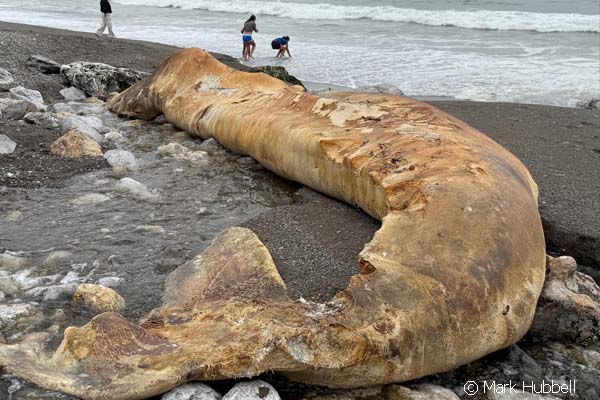
COMMUNITY UPDATES
Pacifica Resource Center

PRC’s Palm-a-Palooza: A Mardi Gras Celebration is Saturday, September 13, 2025!

Palm-a-Palooza tickets are on sale now!
Join our krewe on September 13, 2025 at the Farallon Room at Skyline College!
Feeling jazzy, dressing snazzy, and helping to create a healthier, more stable and compassionate community for us all.
Sponsor Palm-a-Palooza
Most sponsorship levels include tickets to Palm-a-Palooza, as well as exclusive benefits including priority reserved seating, name and/or logo recognition on event materials, and, for select levels, advertising space in the event program
Let the good times roll — we can’t wait to see you there!
Together, we are neighbors helping neighbors! #WeArePRC
For more information about Pacifica Resource Center:
PRC is available to assist our community with essential services, including groceries, housing assistance, and other critical services.
Visit our website pacresourcecenter.org
Email: info@pacresourcenter.org
Social Media: @prc94044
1809 Palmetto Avenue, Pacifica, CA 94044
Pacifica Resource Center (EIN 81-1496989) is a nonprofit public benefit corporation recognized as tax-exempt under Section 501(c)(3) of the Internal Revenue Code. Contributions are tax-deductible to the extent permitted by law.
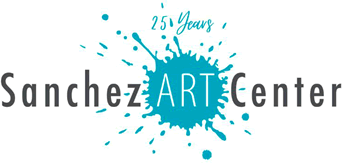
Sanchez Art Center Studio Artists
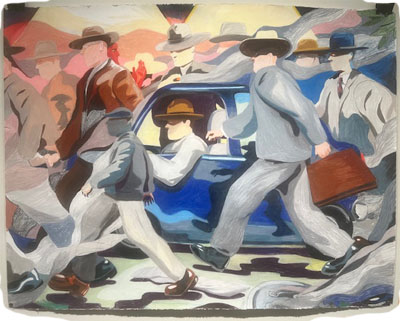
Portraiture, one of the oldest forms of art making, historically reflected individuals in high positions of power. Zander Bice, grandson of Spanish painter and royal portraitist Ricardo Macarrón, has clear lineage with this artistic prowess though has moved from the courts to views of modern life.
Reality|Fantasy, Bice’s first solo exhibition reflects the two focuses of his work: portraits of friends and family and inventive drawings depicting an imagined world that parallels American life. Four of the portraits in the exhibition, created in oil on canvas, take on the large scale of history measuring six feet by four feet and capture full figures with regal demeanor. But there, the comparison ends. Sitters — family and friends — are presented in candid environments that speak to their lifestyles and identity, capturing various moods that invite contemplation as to their moods and thoughts. “Amama”, a portrait of Bice’s grandmother completed in colored pencil and oil pastel, offers a unique perspective that clearly presents the subjects towering personality.
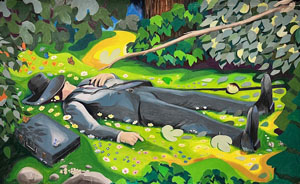
The colored pencil drawings per the artist, “portray an amalgamation of archetypes of businessmen, private investigators, and comic book supervillians,” characters deep in American mythology. Through the bifurcating focuses, the fantastical and the real, the artist aims to represent the internal and external interpretations of contemporary life.
Zander Bice (b 1988) is based in Berkeley, CA. Originally trained as an illustrator at Art Center College of Design in Pasadena, Zander has worked in both commercial art as well as exhibiting artwork in group shows in Los Angeles, San Francisco and Seattle.
On Sunday, August 10, beginning at 3:30 pm, the artist will be in conversation with exhibition curator, Alida Bray.
Soft Power,a group exhibition, reflects the collective creative power of the artists who conduct their art practice at Sanchez Art Center. The title of the exhibition brings forth the recognition that artists, through their work — either quietly and/or in bold statements of strength — create community through their art by providing a depth of emotions for us to explore, the opportunity to delve into complex issues together, the offering of building connection and understanding, as well as inspiring us with originality, imagination and our shared humanity.

The exhibition includes an exciting variety of mediums and style. Sculpture to textile. Paintings in oil, acrylic and watercolor. Mixed media, ink, assemblage, videography, photography, fine jewelry, and printmaking.
Sanchez Studio Artists included in the exhibition are: Jennifer Alpaugh, Kristina Ayala, Janet Barker, Tim Berry, G. Lee Boerger, Irene Carvajal, Sharon Collins, Cynthia Darling, Chris Darst, Robert Dvorak, Sheila Finch, Alan Firestone, Susan Friedman, Sheila Gamble, Nancy Hall, Riitta Herwitz, Andrew Leone, Oscar Lopez, Michelle McCoy, Charles McDevitt, James McPhee, Jan Michaels, Kimberlie Moutoux, Cynthia Rettig, Elizabeth Ross, Nancy Mona Russell, Jesse Schlenker, Rig Terrell and Ann West.
In addition to the in person in the East Gallery, Sanchez Studio Artist works in the show are available to view online in the Sanchez Art Center Virtual Galleries.
A gallery walk and talk for the Soft Power Exhibition will be held on Sunday, August 3, beginning at 2:00 pm.
Over 50 artworks by members of the Art Guild of Pacifica, are sharing works on the theme of Elements of Life. From new growth and nature to fire, the human brain to spiraling wind, whimsical to real life, artists working in natural stones, wood, ceramics, acrylic, oil, mixed media, photography, sculpture, and more, offer their perspective on the theme. The Art Guild is also offering small artworks and art cards for purchase (cash/check). Sanchez Art Center is located at 1220 Linda Mar Blvd in Pacifica, about a mile east of Highway 1. Following opening nights, the galleries are open Friday, Saturday, and Sunday, 1–5 pm, and by appointment, through August 10. For more information 650.355.1894 or visit SanchezArtCenter.org.
Pacifica Childcare Spaces Available!

2025 at The Mildred B Owen Concert Hall

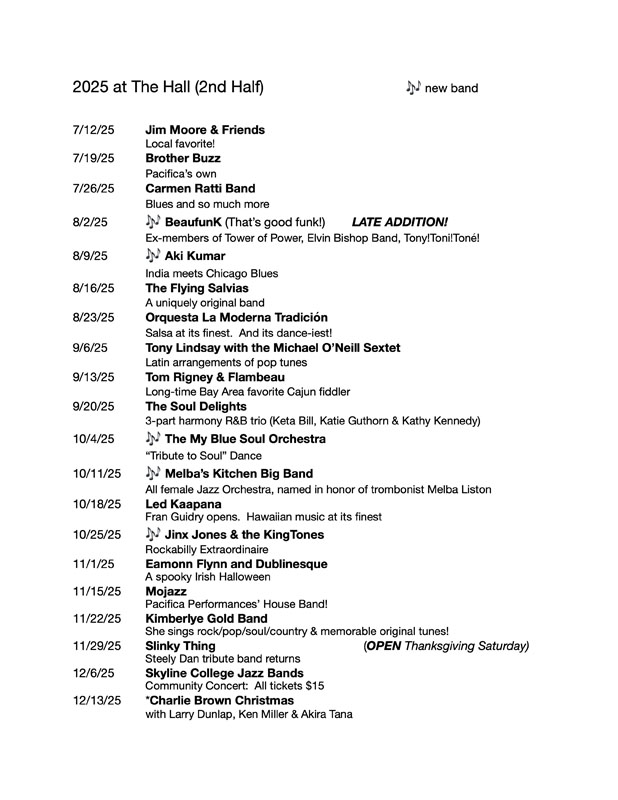
July Pacificans Care Highlights

Community Generosity Changes Lives — Here’s the Proof
Thanks to the community’s continued generosity, July is one of the most impactful months of the year for Pacificans Care. This is when our Board proudly awards annual grants to the four core social service agencies serving Pacifica’s children, youth, families, and seniors.
Together with our donors, we are helping provide hope, stability, and opportunities to neighbors in need. Here’s how community support is making a real difference:
❤️ Pacifica Senior Services — $30,000
This grant helps more than 700 older adults stay active, engaged, and connected. This funding expands programs that fight isolation, enhance wellness, and provide essential nutritional support, creating a stronger, more inclusive community for our seniors.
🏡 Pacifica Resource Center — $35,000
1 in 5 Pacifica families rely on PRC for emergency groceries, rental assistance, utility payments, and long-term support. This grant means fewer families facing homelessness and more finding pathways toward lasting economic security.

👶 Pacifica Child Care Services — $30,000
355 children benefit from enriching early learning and afterschool programs. With 65% of families needing financial aid, this contribution ensures that every child—regardless of income—can grow, play, and thrive in a safe, supportive environment.
🧠 Pacifica Youth Service Bureau — $15,000
This grant provides critical mental health support for local youth and families in crisis. From school-based counseling at IBL to affordable therapy at the clinic, the YSB is helping build stronger kids, healthier families, and a brighter future.
Coastal Cheers Wine & Beer Fundraiser
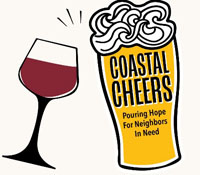
Pacificans Care is thrilled to share that our recent Coastal Cheers Wine & Beer Fundraiser was a wonderful success! Thanks to the incredible support from our community, generous donors, and event sponsors, we raised over $29,000!
This year was our fourth wine tasting event and we were so excited to add beer. Local breweries, Rockaway Beach Brewery and Humble Sea contributed by donating their amazing small craft brews!
Thanks to our sponsors for making this event possible, and to Ann Rudorf for the delicious food, Don Rowell Band, Behind the Scenes Photography and Pacificans Care Board Members & Champions for working at the event.
Pacificans Care appreciates all the donors who joined us for an afternoon of great tastings, good company, and community spirit. Their contributions will go directly toward supporting our neighbors in need!
Pacificans Care Sponsors Pacifica Pride:
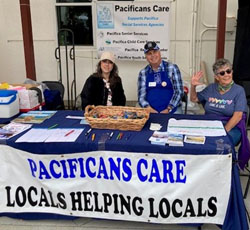
Pacificans Care was proud to be a sponsor with an information table at the well-attended, lively, and positive Pacifica Pride Festival held at the IBL courtyard on June 7. This was another effort by our board and organization to increase our visibility and outreach to the Pacifica community and to celebrate with our fellow citizens.
We spoke with numerous people and distributed Pacificans Care brochures and Rockaway Ricky promotional materials, including calendars. We handed out KIND bars to individuals, kids, and families… with the well-received motto, “You can’t have too much kindness!!!”
| Help Pacificans Care Make a Difference. . . Pacificans Care is the only Pacifica nonprofit organization solely dedicated to supporting social services in Pacifica from children and youth to families and seniors. Pacificans Care is an all-volunteer organization administered by an active Board of Directors comprised of community members dedicated to making a difference in our community. Your contributions to Pacificans Care help to build a healthy, self-sufficient, and improved quality of life for those in need in Pacifica. Thank You for your continuing generosity. |
| Christine Stahl, President – Piper Hanson, Corresponding Secretary – Janine Galligani-Ray, Recording Secretary – Bruce Banco, Treasurer – Robby Bancroft – Jennifer Barnette – Alice Bull -Janes Crowe – Karen Ervin– Ginny Jaquith – Xenia Giolli – Bill Meyerhoff – Bill Michaelis – Jeanne Salisbury – Evelyn Taverna – Jerry Ward – Barbara Wolf Pacificans Care is a 501(c)3 nonprofit organization. Federal tax ID 77-0004308 |
South San Francisco Cultura Fest
